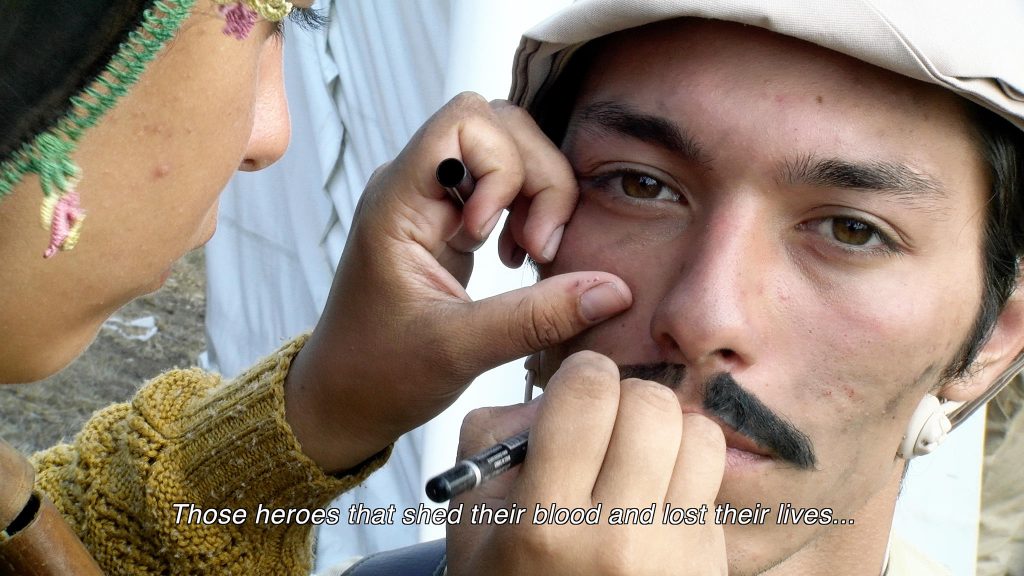(THIS ARTICLE IS MACHINE TRANSLATED by Google from Norwegian)
Early in the morning, while it is still dark, stands a row of young boys dressed in T-shirts with the inscription "Grandpa, I am here" waiting for a turn to resemble a blessing ritual. One by one, they get smeared a green mass over their heads – they are ready to begin the loyalty march in the footsteps of Turkish soldiers who, over 100 years ago, ventured to the front during the First World War. Not far away, too, are Australian and New Zealand tourists – many with yellow or green headgear (green being one of Australia's national colors) – visiting tombs and going up a hill to a memorial "to feel the suffering their [predecessors] felt" .
The Memorial of the Battle of Gallipoli – also referred to as the Battle of Canakkale or the Gallipoli Campaign – in which the Turks defeated the forces of Australia and New Zealand during the First World War, has resulted in similar memorial markings on both sides.
I Heroes the Köken Ergun film commemorates the important event for the Turks on the one hand, and for the Allied forces – represented by the Australian and New Zealand Army Departments (ANZAC) – on the other.
Spontaneous touch
In the Allied struggle against the Ottoman Empire, control over the battle of the Dardanelles was crucial to the attack on the capital, Constantinople, now Istanbul. After an unsuccessful attempt to secure the strait from the sea, they decided to try to conquer the city from the land side.
Turkey is victorious, and the event is considered the start of what became Mustafa Kemal Atatürk's struggle for independence from the Ottoman Empire and the establishment of what would become a modern secular Turkish state. (The religious connotations we see in Ergun's film today would probably have made Atatürk raise an eyebrow or two.)
The Turkish tour guides transform every one of the many Turkish ones
the anecdotes of colorful and dramatic stories.
In order to observe how both the Turks and the representatives of the allies mark the memory of those who fell during the battle, video artist Ergun joined a bus tour with two tourist groups. At the memorial sites, he observes the group members and talks to some of them. His observational approach testifies to a dynamic film strategy, which gives the film a spontaneous feel.
Transformed into martyrs
I Heroes it becomes clear that heroism is closely linked to nationalist sentiments and patriotism. This is expressed in the film, including through a corporal, a stretcher and a pair of donkeys. Through the interchange between the Turkish group's and the ANZAC group's memory markings at the respective memorial sites, we are witnessing major differences in the approach to the past. The Turkish tour guides transform each one of the many Turkish anecdotes into colorful and dramatic stories. They make every effort to communicate the dramatic events to their companion. There are also some dramatizations and dedications to martyrs such as Corporal Seyit, who is said to have lifted 140-kilo bombs, placed them in a cannon and sunk one of the enemy ships.

The ANZAC tourists, on the other hand, receive little guidance from their tour guides. We see one of the guides reading printed notes, and the tourists have a good opportunity to wander around. But tourists from New Zealand and Australia also have their heroes to honor: a British (alleged) deserter, now a carrier of the name Simpson Kirkpatrick, who, with the help of a few donkeys, carried about 300 injured soldiers from the battlefield.
A business model
For the ANZAC tourists, the campaign is considered the beginning of Australian and New Zealand national consciousness. 25. April, the commemoration day – known as "ANZAC Day" – is probably the most important commemoration of military losses and war veterans in the two countries. More importantly, the campaign also contributed to the ANZAC countries' independence from the UK.

Both sides have strong faith in national myths about ordinary men who became martyrs or heroes (or deities). "It is these kinds of stories and practices that stimulate today's populism," Ergun said as we discussed the film at the Rotterdam International Film Festival in January.
Heroes finally shows how history turns into anecdotes that turn into priced consumer goods. For both sides, the memorial mark is a tourist excursion saturated with nationalist sentiments. For example, the Turkish dramas of the course of the battle take place vis-à-vis the tourist shop. Despite the nationalist sentiments, the memory markers and their supporters have, above all, become a business model.
Translated by Siri Sollie


